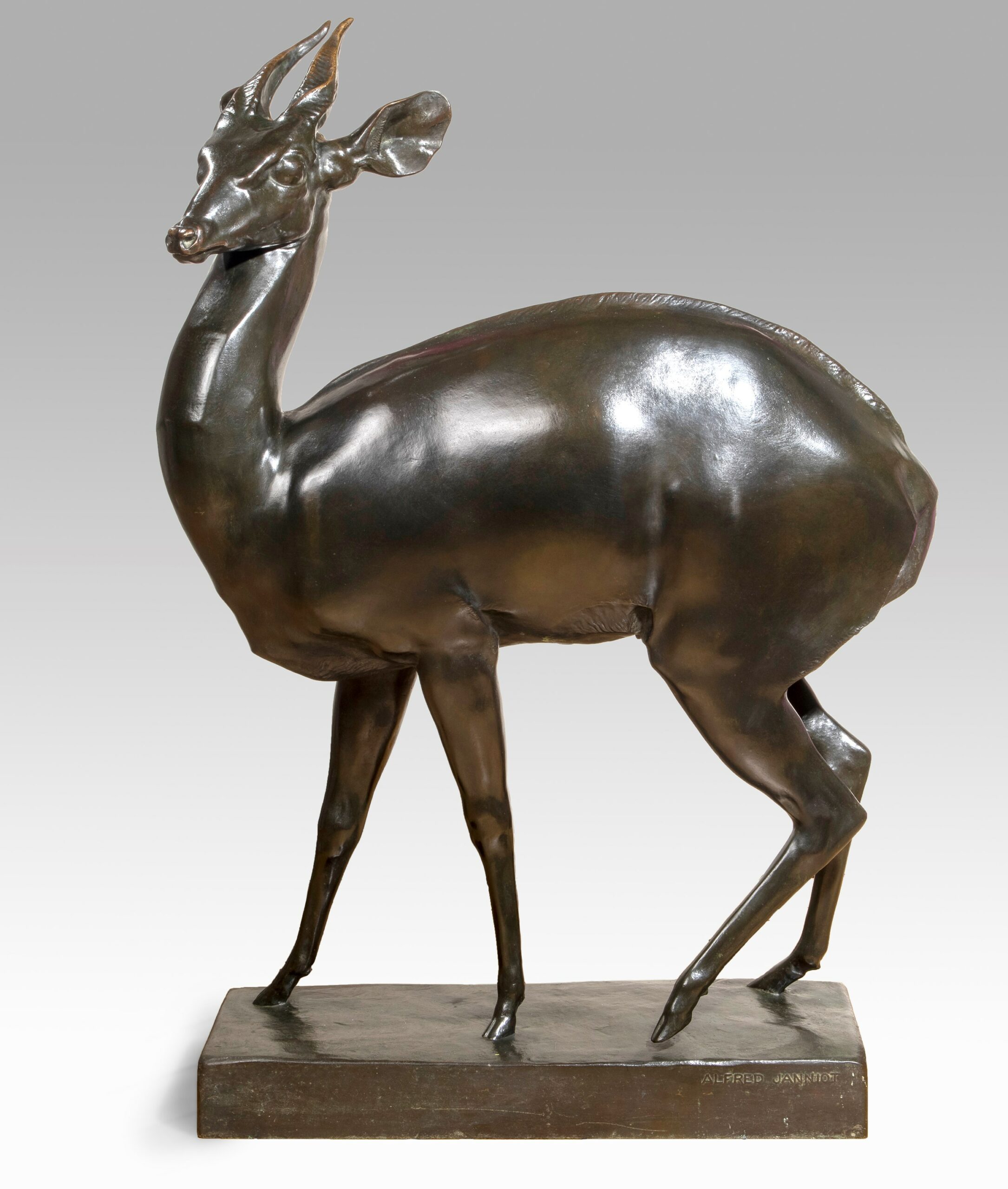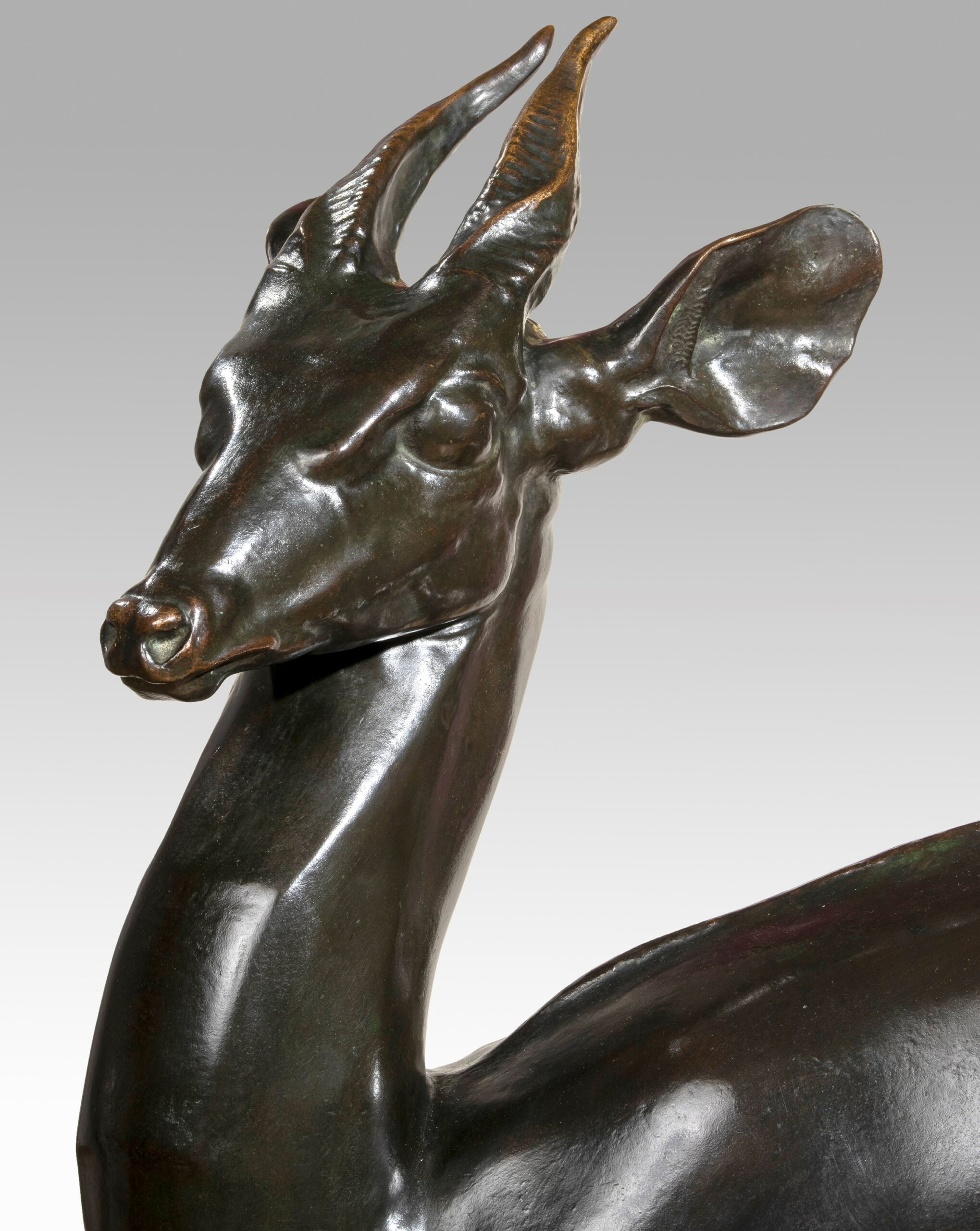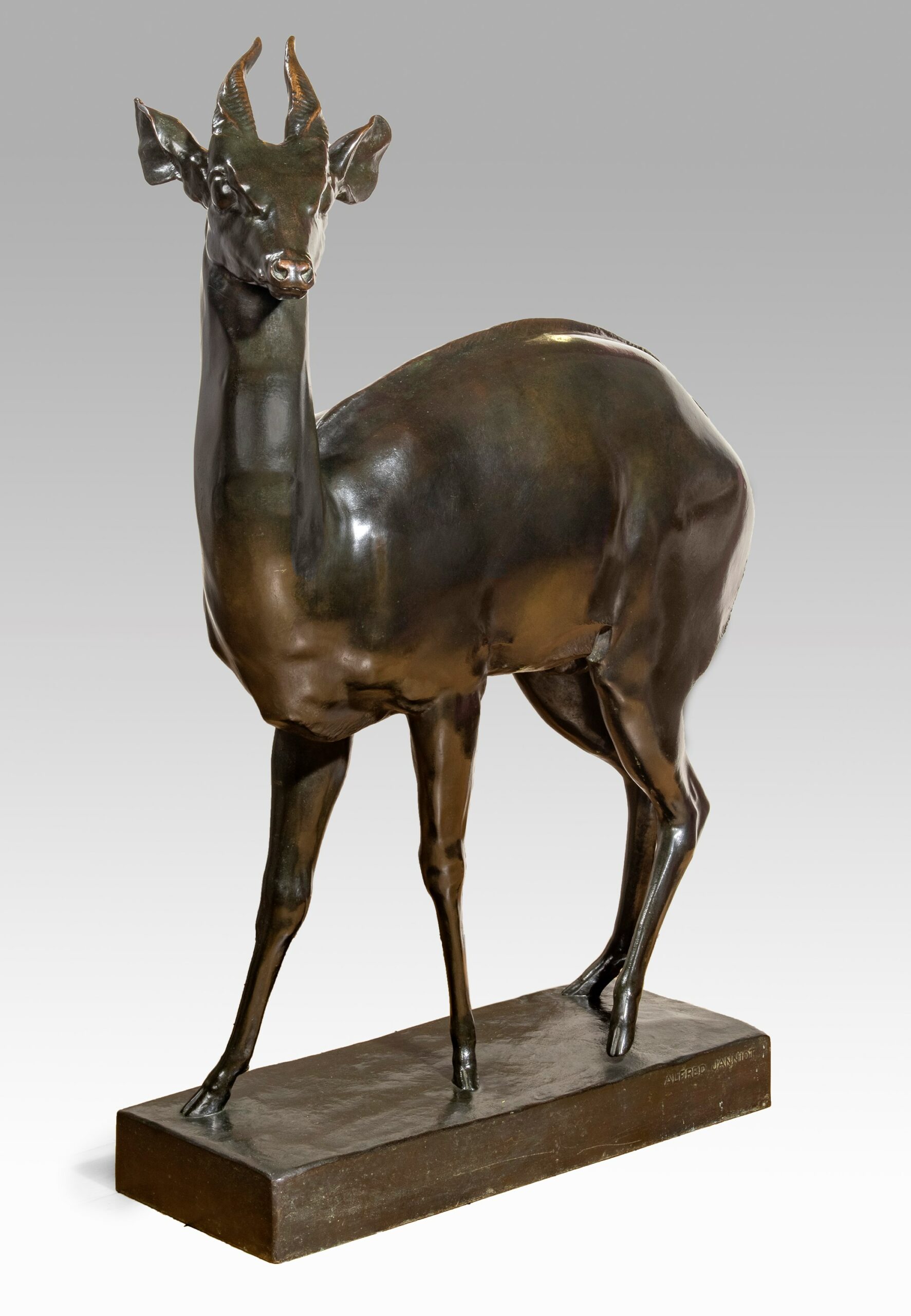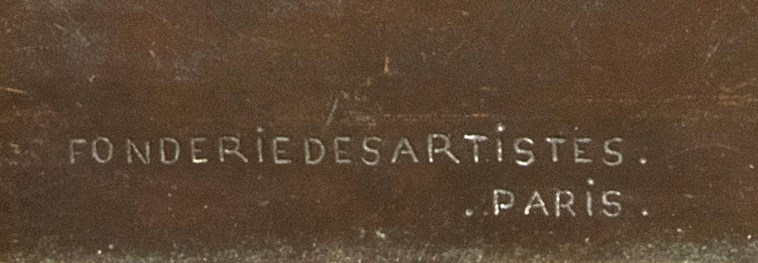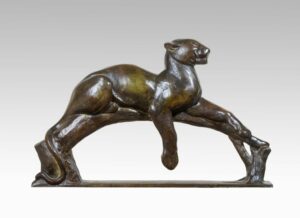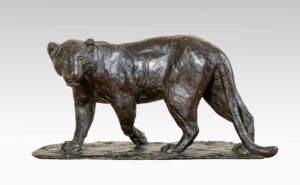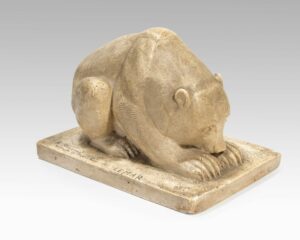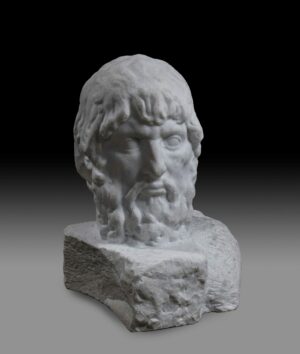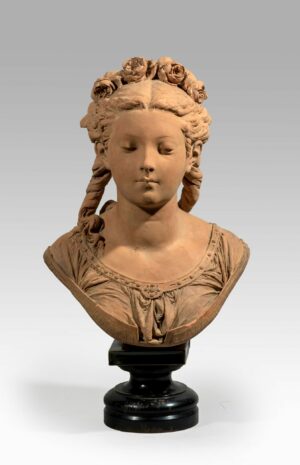Description
Winner of the Grand Prix de Rome in 1919, Alfred Auguste Janniot distinguished himself with mastery and brilliance in the friezes and bas-reliefs of major Parisian and provincial buildings, whether for post-war reconstruction projects or for the grand international exhibitions of the time. He established himself as a master of bas-relief, notably at the Exposition Coloniale of 1931 with his sculpted façade for the Musée des Colonies, evoking Africa and Asia. In 1937, the Exposition Internationale des Arts et des Techniques once again showcased his talent through the monumental commissions for the new Palais de Chaillot and the Palais de Tokyo. As an ambassador of French sculpture, he was also commissioned to decorate Rockefeller Center in New York, where his magnificent gilded bronze door for the Maison de la France opens onto Fifth Avenue.
Janniot’s strong sense of decoration and allegory is also evident in his freestanding sculptures, as exemplified by this Antelope, with its beautifully smooth and rounded volumes. Its firm yet fluid design recalls the imposing Doe from the famous group Hommage à Jean Goujon (1924, 200 x 235 cm), in the collection of the Calouste Gulbenkian Foundation in Lisbon. The model for the Antelope was created around the same period, initially in a small version that enjoyed great success. Later, around 1929-1930, a larger version, measuring 101 cm in height, was commissioned for the Jean Jaurès Kindergarten in Bouscat, near Bordeaux, by the mayor, Mr. Cayrel. The sculpture remains in place today and is one of only four known examples of this size.
It is known that one of these four examples belonged to the collection of the architect, Roux-Spitz, whom Janniot met during his time in Rome and with whom he shared an interest in mural decoration.
The third example was part of the collection of the architect, Léon Azéma, who, along with Jacques Carlu and Boileau, won the competition for the construction and renovation of the Palais de Chaillot for the 1937 Paris Exposition Universelle. A great admirer of Janniot’s work, Azéma insisted on his participation in sculpting the basins and façade of the Musée Permanent des Colonies. Given that our sculpture has a well-documented tradition of being a gift from Janniot to an architect friend and remained within the same family until recently coming to market, there is every reason to believe that this third example is the one presented here.
The fourth known example was created for the Open-Air School in Pantin, built in 1936, a date that also appears on the sculpture still in place in the schoolyard.
For the casting of these bronzes, Janniot turned to a cooperative foundry active between 1920 and 1938, which establishes the terminus ad quem for our sculpture’s casting. This foundry, founded by a artists’ collective, was established to produce high-quality casts in response to commercial foundries that prioritized efficiency over artistic excellence. It was for this reason that the French state entrusted it with the casting of several monumental sculptures for the façades of the Palais de Chaillot facing the Seine, including Apollo Musagète by Henri Bouchard and Hercules Taming a Bison by Pommier.
Exceptional in both its size and the quality of its craftsmanship, this bronze is a rare and outstanding example of Janniot’s work.

